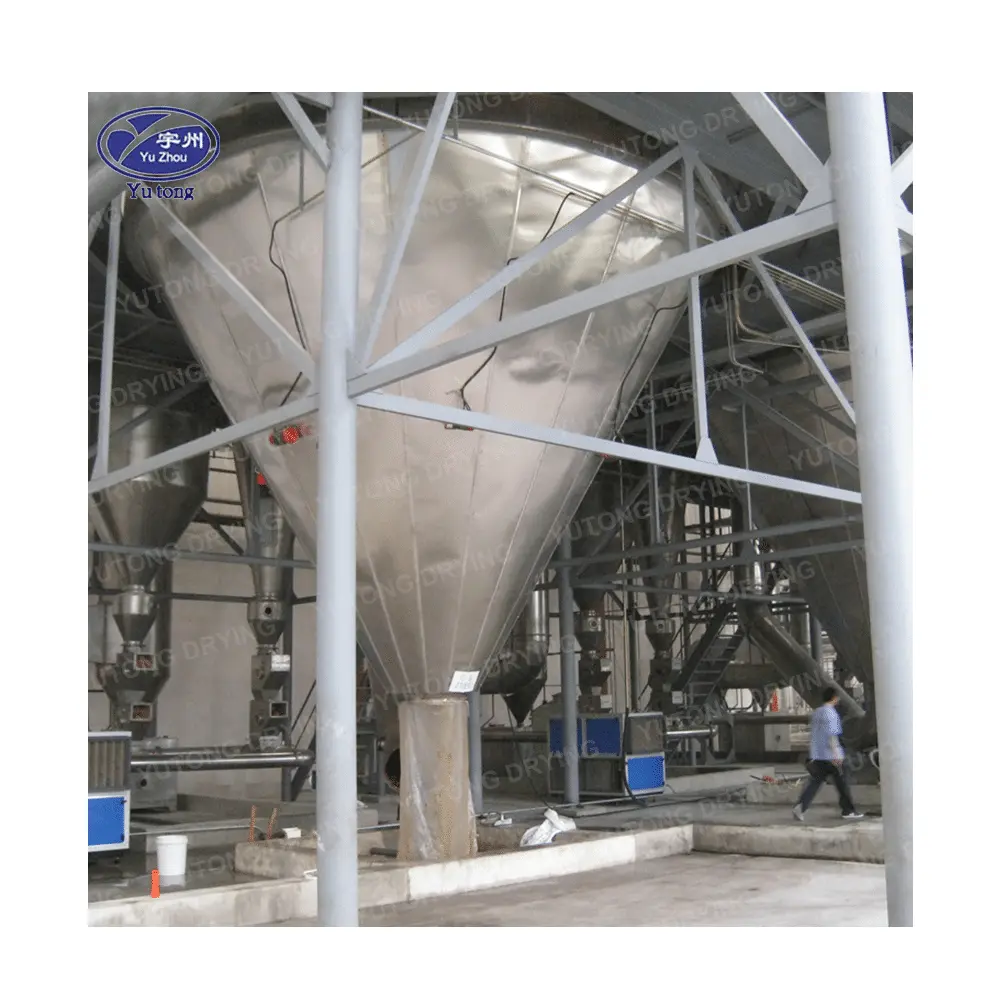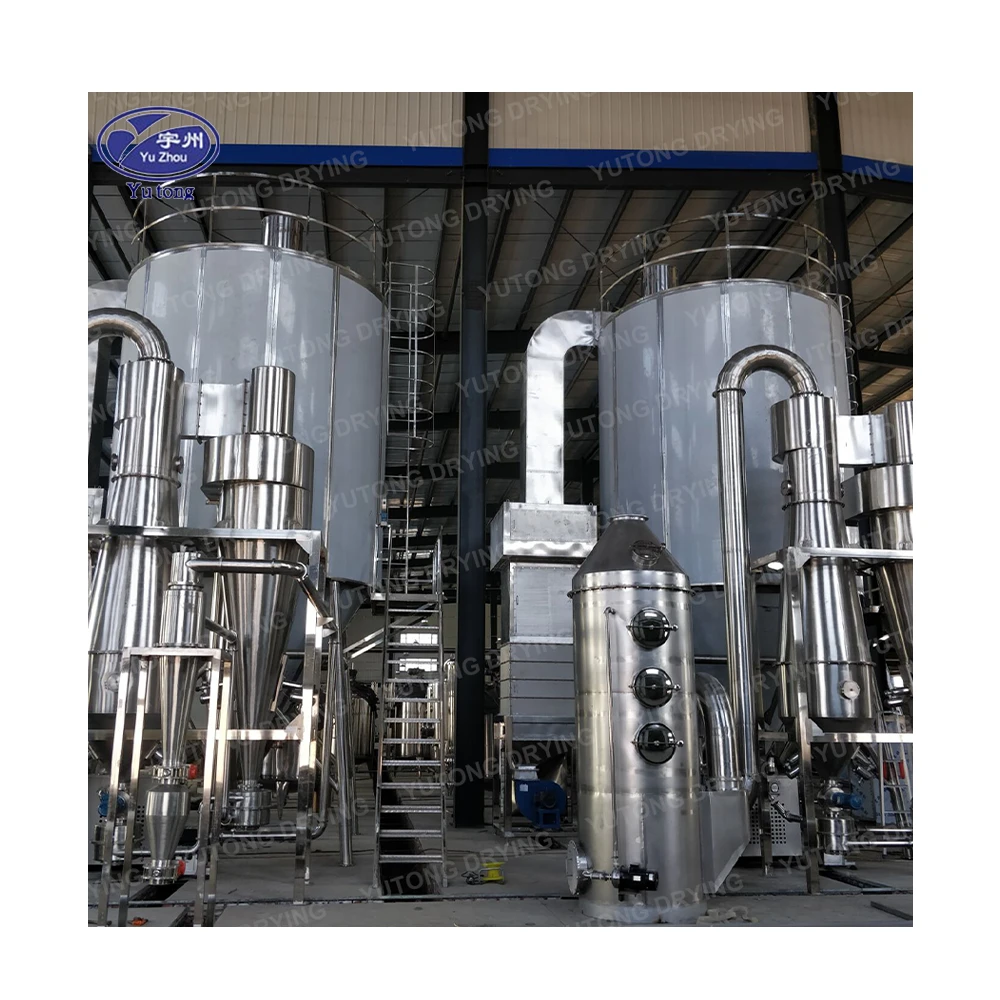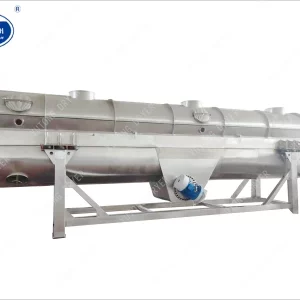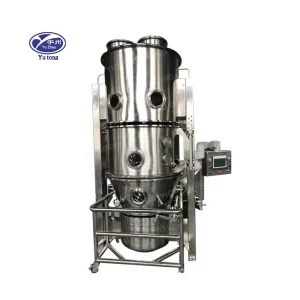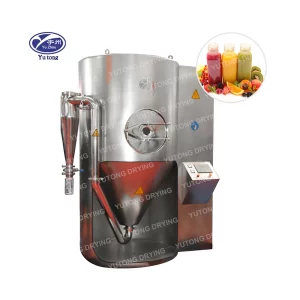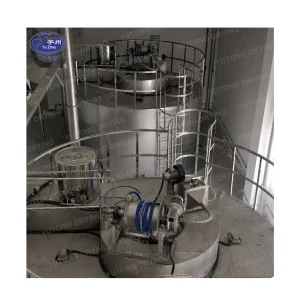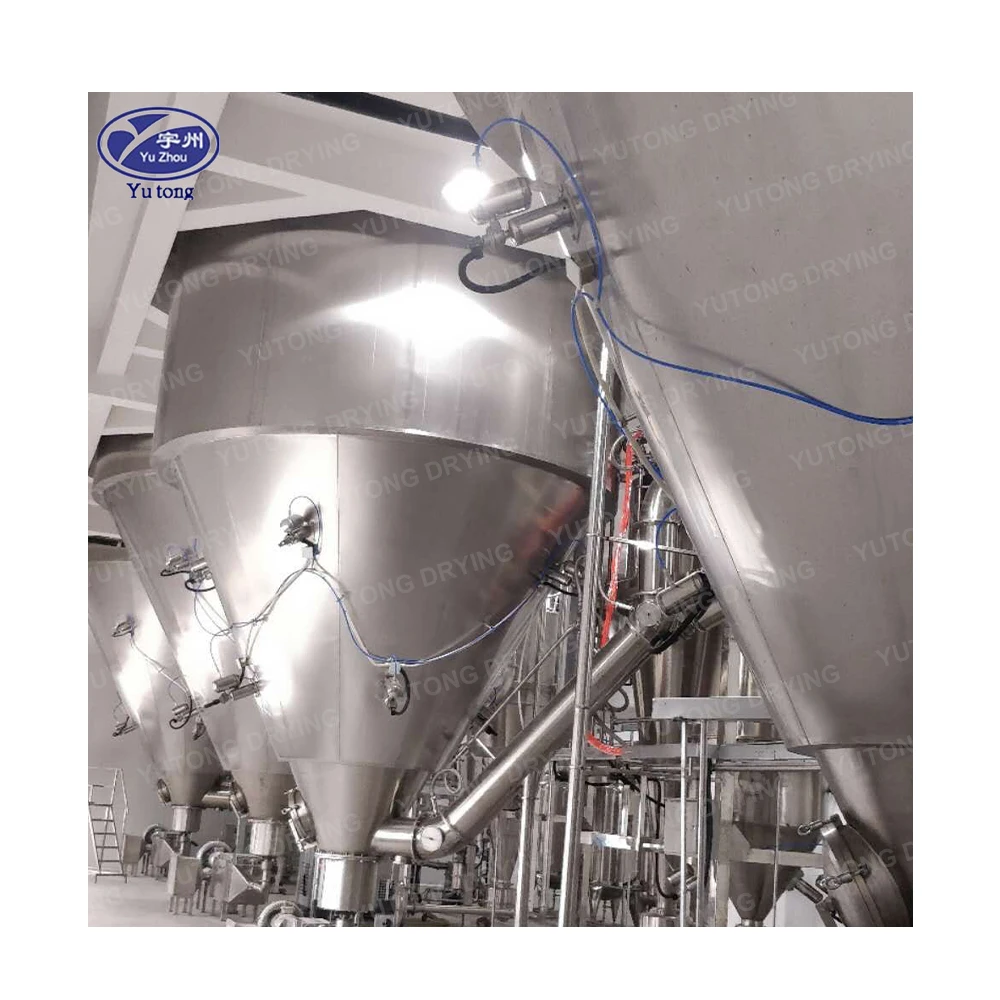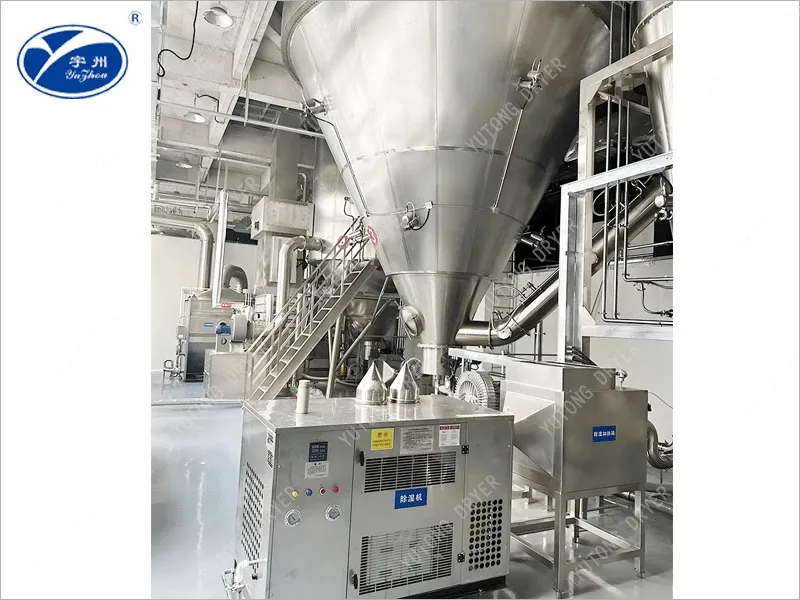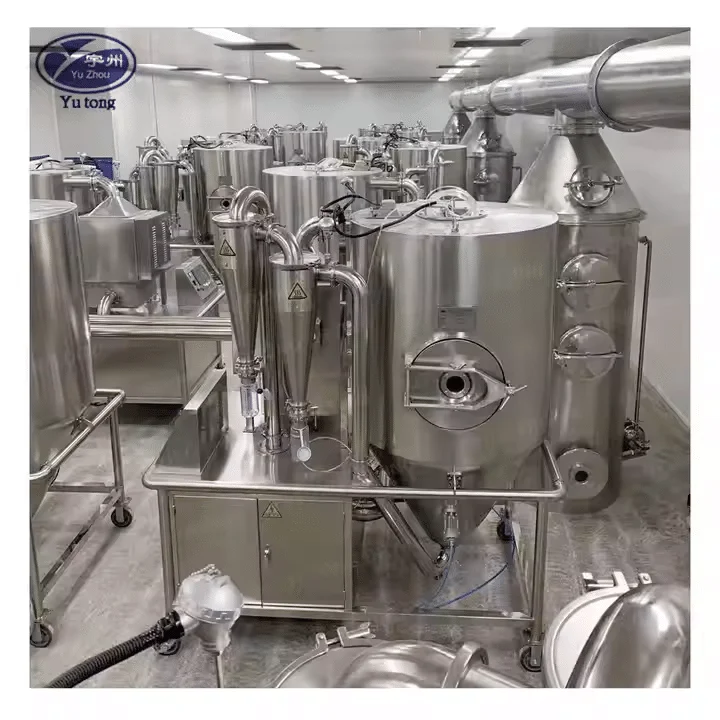Drying is a crucial process in various industries, especially when it comes to preserving and processing foods, pharmaceuticals, and chemicals. Among the various drying methods, tray dryers and vacuum tray dryers are popular choices. Understanding their functions and applications can help businesses choose the right equipment for their needs. In this article, we’ll explore the differences between tray dryers and vacuum tray dryers, their functions, applications, and some safety considerations.
What is a Tray Dryer?
A tray dryer is a type of convection dryer that uses heated air to remove moisture from materials. It consists of multiple trays stacked within a chamber where hot air circulates to dry the products placed on the trays. Tray dryers are widely used in the food, pharmaceutical, and chemical industries due to their simplicity, efficiency, and effectiveness.
Components of a Tray Dryer
Tray dryers are composed of several key components, each playing a vital role in the drying process. The chamber houses trays that hold the materials to be dried. A fan system ensures the circulation of heated air, which is crucial for even drying. Temperature and humidity sensors monitor the drying conditions, allowing for precise adjustments.
How Tray Dryers Work
Tray dryers operate by utilizing a heated airflow that passes over the surface of the materials. The moisture within the materials evaporates into the air, which is then expelled from the chamber. The efficiency of this process can be enhanced by adjusting the airflow speed and temperature, which need to be tailored to the specific material being dried.
Advantages of Tray Dryers
Tray dryers offer several advantages, making them a preferred choice in many industries. Their design enables easy loading and unloading of materials, thereby enhancing operational efficiency. They are versatile, capable of handling a variety of materials. The ability to control drying conditions helps prevent product degradation.
Applications of a Tray Dryer
Tray dryers are versatile and can dry a wide range of materials, including fruits, vegetables, herbs, pharmaceuticals, and chemicals. They are particularly useful for heat-sensitive products, as the drying conditions can be carefully controlled to prevent degradation.
Food Industry Applications
In the food industry, tray dryers are indispensable for preserving the quality and nutritional value of products. They are used to dry fruits, vegetables, herbs, and spices, ensuring a longer shelf life while maintaining flavor and color. Tray dryers also play a critical role in processing ingredients for ready-to-eat meals and snacks.
Pharmaceutical Industry Applications
Pharmaceutical companies rely on tray dryers to ensure the stability and potency of their products. Active pharmaceutical ingredients (APIs) and excipients are dried under controlled conditions to maintain their effectiveness. Tray dryers also facilitate the drying of herbal extracts, which are used in natural remedies and supplements.
Chemical Industry Applications
In the chemical industry, tray dryers are utilized for drying various chemical compounds and intermediates. They are ideal for materials that require precise drying conditions to prevent chemical reactions or degradation. Tray dryers also support research and development efforts by allowing small-scale drying of experimental compounds.
What is a Vacuum Tray Dryer?
A vacuum tray dryer operates on the same principle as a tray dryer but with an added advantage: it works under vacuum conditions. By reducing the pressure within the chamber, the boiling point of the liquid being evaporated is lowered. This allows drying at lower temperatures, making vacuum tray dryers ideal for sensitive materials that cannot withstand high heat.
Components of a Vacuum Tray Dryer
Vacuum tray dryers share some components with standard tray dryers but include additional elements for vacuum operation. A vacuum pump is essential for reducing the chamber pressure, while a condenser captures the evaporated moisture. The trays and chamber are designed to withstand vacuum conditions, ensuring durability and safety.
How Vacuum Tray Dryers Work
In a vacuum tray dryer, the materials are placed on trays within a sealed chamber. This enables drying at lower temperatures, reducing the risk of thermal degradation or oxidation. The controlled environment minimizes the risk of contamination.
Advantages of Vacuum Tray Dryers
Vacuum tray dryers offer significant advantages for drying sensitive materials. The ability to dry at lower temperatures preserves the quality and integrity of temperature-sensitive products. The vacuum environment reduces the risk of oxidation and contamination, making these dryers ideal for high-purity products. Additionally, they can enhance energy efficiency by utilizing lower drying temperatures.
Applications of a Vacuum Tray Dryer
Vacuum tray dryers are utilized in industries where maintaining the quality and integrity of the product is essential. They are commonly employed in the pharmaceutical, chemical, and food industries for drying temperature-sensitive products, such as active pharmaceutical ingredients (APIs), enzymes, and delicate food items.
Pharmaceutical Applications
In the pharmaceutical industry, vacuum tray dryers are essential for drying temperature-sensitive active ingredients and formulations. They help maintain the stability and efficacy of drugs by preventing degradation. Vacuum tray dryers are also used for drying biological products, such as enzymes and vaccines, where maintaining activity is crucial.
Chemical Applications
The chemical industry benefits from vacuum tray dryers for drying high-purity chemicals and intermediates. These dryers ensure that the drying process does not alter the chemical composition or introduce impurities.
Food Industry Applications
In the food industry, vacuum tray dryers are employed for drying delicate and high-value food products. They are particularly useful for drying products that are sensitive to heat and oxidation, such as certain fruits, vegetables, and specialty ingredients. Vacuum drying helps preserve the flavor, color, and nutritional content of these products.
Differences Between Tray Dryer and Vacuum Tray Dryer
Understanding the differences between these two drying methods can help you select the most appropriate system for your specific needs.
Operating Conditions
- Tray Dryer: Operates at atmospheric pressure with heated air circulating over the product. It requires constant monitoring to maintain optimal drying conditions.
- Vacuum Tray Dryer: Operates under vacuum conditions, enabling lower-temperature drying. The vacuum environment reduces the boiling point, making it ideal for sensitive materials.
Temperature Sensitivity
- Tray Dryer: Suitable for materials that can withstand higher temperatures. The drying process is faster, but there’s a risk of overheating delicate products.
- Vacuum Tray Dryer: Ideal for temperature-sensitive materials due to lower drying temperatures. It prevents thermal degradation and maintains product integrity.
Energy Efficiency
- Tray Dryer: This may consume more energy due to higher operating temperatures. However, it can handle larger batches, making it cost-effective for certain applications.
- Vacuum Tray Dryer: Generally more energy-efficient as it operates at lower temperatures. The vacuum system requires additional energy but often results in lower overall consumption.
Cost
- Tray Dryer: Typically less expensive to purchase and operate. It is a cost-effective solution for businesses with less stringent drying requirements.
- Vacuum Tray Dryer: Higher initial cost and maintenance due to vacuum system components. The investment is justified for high-value products where quality preservation is paramount.
Hazards and Safety Considerations
When using either a tray dryer or a vacuum tray dryer, safety is of paramount importance. Here are some safety considerations:
HAZOP for Vacuum Tray Dryer
A Hazard and Operability Study (HAZOP) can help identify potential risks in the operation of vacuum tray dryers. This involves a systematic review of the process to pinpoint hazards and ensure safe operation. Key risks include vacuum leaks, overheating, and pressure build-up. Implementing HAZOP recommendations can mitigate these risks.
URS for Vacuum Tray Dryer
A User Requirement Specification (URS) outlines the necessary features and functions of a vacuum tray dryer to ensure it meets user needs. This includes specifications for vacuum levels, temperature control, and safety features. A well-defined URS guides the design, selection, and operation of the dryer, aligning it with operational goals.
General Safety Tips
- Ensure regular maintenance and inspection of equipment to prevent malfunctions. This includes checking seals, vacuum pumps, and control systems.
- Train operators on safe handling and emergency procedures. Regular training ensures that all personnel are equipped to respond to potential hazards.
- Implement safety interlocks and alarms to detect and mitigate potential hazards. Automated systems can provide early warnings of pressure changes or equipment failures.
Conclusion
Choosing between a tray dryer and a vacuum tray dryer depends on the specific needs of your business. While tray dryers are cost-effective and suitable for materials that can handle higher temperatures, vacuum tray dryers offer gentle drying for sensitive products. By understanding their functions, applications, and safety considerations, you can make an informed decision that ensures efficient and safe drying processes in your industry.
Incorporate these insights into your drying operations to optimize efficiency and product quality, whether you’re working in food processing, pharmaceuticals, or chemical manufacturing. The right drying solution will not only enhance product quality but also streamline your production process, contributing to overall business success.

